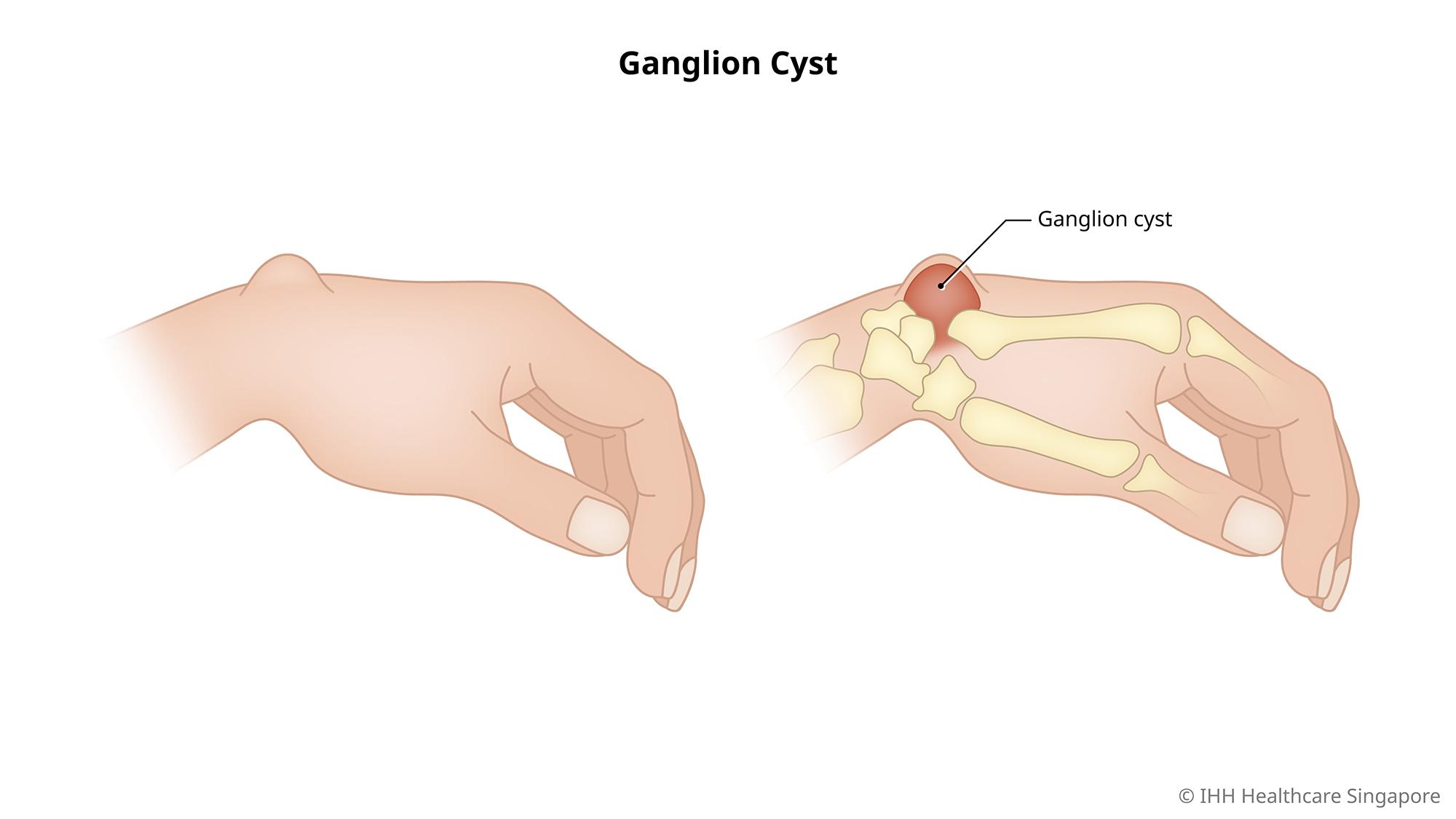-
-
Featured Care Areas

Ganglion Cysts
What are ganglion cysts?
Ganglion cysts are non-cancerous, benign lumps that most commonly develop along the tendons or joints of your wrists or hands and sometimes, the ankles and feet.
Ganglion cysts are typically:
- Oval or round in shape
- Filled with a jelly-like fluid
- Painful if pressing on a nearby nerve
- Pea-sized to around 2.5 cm in diameter
The location of your ganglion cysts can sometimes interfere with joint movement. If your ganglion cyst is causing problems, your doctor may suggest draining the cyst with a needle or removing the cyst through surgery.
If your ganglion cyst causes no problems, no treatment is necessary, as the cysts usually go away on their own.
What are the symptoms of ganglion cysts?
Ganglion cysts typically:
- Occur along the tendons or joints of wrists, hands, ankles or feet.
- Have a round or oval shape, and measure less than 2.5 cm, although the size of a cyst may increase if a joint is used often.
- Do not cause any pain unless the cyst presses on a nerve or causes mechanical impingement at the joint. If a cyst presses on a nerve, it can cause pain, tingling, numbness or muscle weakness.
What causes ganglion cysts?
The causes of ganglion cysts are still largely unknown. Some believe that it might be caused by:
- Repetitive motion or continuous micro-injury.
- A flaw in the joint such as minor ligament tears or holes in the joint lining (capsule) or tendon sheath.
- Trauma, which breaks the joint tissue down to form small cysts that gather into a larger mass.
What are the risk factors for ganglion cysts?
Certain factors increase your risk of ganglion cysts including:
- Osteoarthritis. If you have finger arthritis, it is common to develop a ganglion cyst near your fingertip joints too.
- Previous injury. You are more likely to develop ganglion cysts near joints or tendons that have been injured before.
- Sex and age. Ganglion cysts most commonly occur in women that are aged between 20 and 40 years old.
This page has been reviewed by our medical content reviewers.
Need help?
For enquiries, please call
+65 6575 7575
For appointment bookings, please WhatsApp
+65 8111 9777



